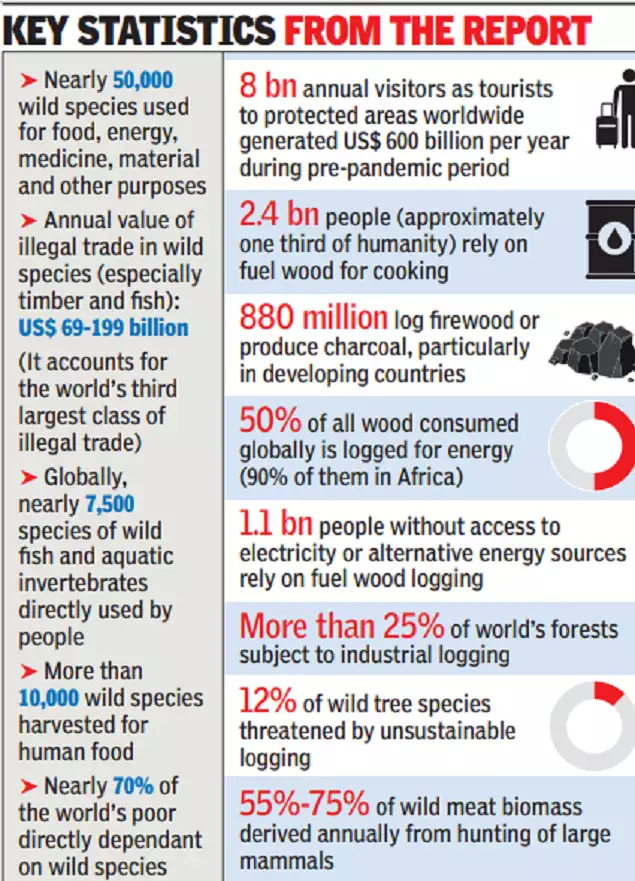ForumIAS announcing GS Foundation Program for UPSC CSE 2025-26 from 19 April. Click Here for more information.
ForumIAS Answer Writing Focus Group (AWFG) for Mains 2024 commencing from 24th June 2024. The Entrance Test for the program will be held on 28th April 2024 at 9 AM. To know more about the program visit: https://forumias.com/blog/awfg2024
Contents
Source: The post is based on the article “1 million animal and plant species face extinction threat: Study” published in TOI on 9th July 2022
What is the News?
Intergovernmental Science-Policy Platform on Biodiversity and Ecosystem Services (IPBES) has released a report titled “Sustainable Use of Wild Species”.
What is the purpose of the report?
The report offers insights into the sustainable use of wild species by reminding the global community how much, human beings are interdependent, with all living beings and why it’s important to conserve them by stopping overexploitation and protecting their habitats.
What are the key findings of the report?
Source: TOI
Dependence on Wildlife Species: 50,000 wild species are used for different human purposes, including more than 10,000 wild species harvested directly for food.
– 70% of the world’s poor are directly dependent on wild species.
– One in five people rely on wild plants, algae, and fungi for their food and income;
– One in three people – 2.4 billion – rely on fuel wood for cooking.
Non-Extractive use: Even non-extractive uses of wild species are important. For instance, tourism based on observing wild species is an important revenue source.
Cultural Significance: Certain species have cultural importance, as they offer multiple benefits that define tangible and intangible features of people’s cultural heritage.
Threats faced by Wildlife Species:
Overexploitation, climate change, pollution, and deforestation are pushing one million species towards extinction.
Hence, unless humankind improves the sustainable use of nature, the Earth is on its way to losing 12% of its wild tree species, over a thousand wild mammal species, and almost 450 species of sharks and rays among other irreparable harm.
Suggestions given by the report:
Firstly, integration of diverse value systems, equitable distribution of costs and benefits, changes in cultural norms and social values, and effective institutions and governance systems can facilitate the sustainable use of wild species.
Secondly, bringing scientists and indigenous peoples together to learn from each other will strengthen the sustainable use of wild species.
Thirdly, reducing illegal, unreported, and unregulated fishing, suppressing harmful financial subsidies, supporting small-scale fisheries, adapting to changes in oceanic productivity due to climate change, and proactively creating effective transboundary institutions.





